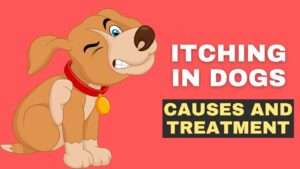Have you ever wondered if your furry friend can indulge in the delights of lobster alongside you? The thought of sharing that succulent seafood might cross your mind, but is it safe for your canine companion? Let’s delve into this crustacean conundrum and explore whether dogs can feast on lobster without any adverse effects.
Contents Overview
What is Lobster
Lobster is a type of shellfish known for its sweet and tender meat. It’s often considered a delicacy in many parts of the world and is commonly served in various dishes, from lobster rolls to lobster bisque. Lobsters are typically found in saltwater habitats and have a hard exoskeleton, which they molt as they grow. They are a good source of protein and omega-3 fatty acids, making them a popular choice for seafood lovers.
Nutritional Value of Lobster
Lobster is a nutritious seafood with several key nutrients. It is rich in protein, which is essential for muscle growth and repair. Additionally, lobster provides omega-3 fatty acids, which support heart health and promote a shiny coat in dogs. Lobster also contains vitamins and minerals such as vitamin B12, zinc, and selenium, which contribute to overall health and well-being. However, it’s important to note that lobster is also high in cholesterol and should be fed to dogs in moderation to prevent any potential health issues.
Can Dogs Eat Lobster Safely?
Dogs can eat lobster safely in moderation, but there are some important considerations to keep in mind. While lobster is a good source of protein and omega-3 fatty acids, which can benefit your dog’s health, it’s essential to remove the shell and any seasoning before feeding it to your furry friend. The sharp shell poses a choking hazard, and certain seasonings, such as garlic or onions, can be toxic to dogs. Additionally, some dogs may be allergic to seafood, so it’s crucial to monitor them for any signs of adverse reactions after consuming lobster. Overall, while lobster can be a tasty treat for dogs on occasion, it’s best to offer it sparingly and ensure it’s prepared safely to avoid any potential risks.
Benefits of Lobster to Dogs
Let’s dive into the potential benefits of lobster for dogs.
- Protein Source: Lobster is rich in protein, which is crucial for muscle development and overall health in dogs. Protein supports various bodily functions, including repairing tissues and producing enzymes.
- Omega-3 Fatty Acids: Lobster contains omega-3 fatty acids, which promote healthy skin and a shiny coat in dogs. These essential fatty acids also support cognitive function and joint health.
- Vitamins and Minerals: Lobster provides vitamins such as B12 and minerals like zinc and selenium, which play vital roles in immune function, metabolism, and overall well-being in dogs.
Potential Risks and Precautions of Feeding Lobster to Dogs
Lobster, a delectable seafood delight, may seem like a tempting treat for dogs, but it’s crucial to understand the potential risks and take necessary precautions before sharing it with our canine companions.
Potential Risks
Feeding lobster to dogs can pose several risks that pet owners should be aware of:
- High Fat Content: Lobster is rich in fat, which can be difficult for some dogs to digest, leading to gastrointestinal upset or even pancreatitis, a potentially life-threatening condition.
- Shell Hazards: The shells of lobsters can pose a choking hazard or cause gastrointestinal blockages if ingested by dogs. Sharp edges or small fragments may also cause injury to the mouth, throat, or digestive tract.
- Seasonings and Preparation: Lobster dishes often contain seasonings, butter, or sauces that may be harmful to dogs. Ingredients like garlic, onions, or excessive salt can be toxic or lead to digestive issues in dogs.
- Potential Allergic Reactions: Some dogs may be allergic to shellfish like lobster, resulting in symptoms such as itching, hives, swelling, or even anaphylaxis in severe cases.
- Bacterial Contamination: Raw or undercooked lobster can harbor bacteria such as Salmonella or Vibrio, which can cause foodborne illness in dogs and humans alike.
Precautions
To minimize the risks associated with feeding lobster to dogs, pet owners should take the following precautions:
- Moderation: Lobster should be fed to dogs in moderation, as an occasional treat rather than a regular part of their diet.
- Cooking Thoroughly: Lobster should be cooked thoroughly to kill any potential bacteria or parasites. Avoid feeding dogs raw or undercooked lobster.
- Remove Shells: Before offering lobster to dogs, remove the shells and any small bones to prevent choking hazards or gastrointestinal blockages.
- Avoid Seasonings: Serve plain, unseasoned lobster to dogs, without any added salt, butter, garlic, onions, or other potentially harmful ingredients.
- Monitor for Reactions: Watch for any adverse reactions or symptoms of food intolerance or allergy after feeding lobster to your dog. If any concerns arise, consult with a veterinarian promptly.
Safe Ways to Feed Lobster to Dogs
Let’s explore some safe ways to feed lobster to dogs, ensuring that they can enjoy this delicacy without any risks.
Cooking Thoroughly:
- Boiling or Steaming: Cook lobster thoroughly by boiling or steaming it until the meat is fully cooked and the shell turns red. Avoid serving raw or undercooked lobster to dogs to prevent the risk of bacterial contamination.
Preparation Tips: 2. Remove Shells: Before serving lobster to dogs, remove the shells entirely to prevent choking hazards or gastrointestinal blockages. Ensure that no small fragments of shell remain, as they can pose a risk to your dog’s digestive tract.
- Deveining: Remove the digestive tract or “vein” from the lobster meat, as it can contain gritty residue or potential contaminants. Clean the meat thoroughly before serving it to your dog.
Serving Suggestions: 4. Plain and Unseasoned: Serve lobster to dogs plain and unseasoned, without any added salt, butter, garlic, onions, or other seasonings that may be harmful to them. Keep the dish simple to avoid any potential digestive upset or adverse reactions.
- Moderation: Offer lobster to dogs as an occasional treat rather than a regular part of their diet. Moderation is key to prevent overindulgence and minimize the risk of digestive issues or pancreatitis due to the high fat content of lobster.
- Small Portions: Serve lobster to dogs in small, bite-sized pieces to make it easier for them to chew and digest. Avoid feeding large chunks of lobster to prevent choking or swallowing difficulties.
Monitoring and Care: 7. Monitor for Reactions: After feeding lobster to your dog for the first time, observe them closely for any signs of allergic reactions or digestive upset. Symptoms may include itching, hives, vomiting, diarrhea, or lethargy. If any concerns arise, consult with a veterinarian promptly.
- Hydration: Ensure that your dog has access to fresh water before and after eating lobster to prevent dehydration and aid in digestion.
- Regular Diet: Remember that lobster should not replace your dog’s regular balanced diet. It should be offered as an occasional treat in addition to their usual meals.
When to Avoid Lobster to Dog
- Allergic Reactions: If your dog has a known allergy to shellfish or seafood, avoid feeding them lobster to prevent allergic reactions.
- Digestive Sensitivities: Dogs with sensitive stomachs or digestive issues may not tolerate lobster well, so it’s best to avoid it to prevent gastrointestinal upset.
- Pancreatitis Risk: Dogs prone to pancreatitis should avoid high-fat foods like lobster, as it can exacerbate the condition and lead to serious health issues.
- Preparation Concerns: If you’re unable to cook lobster thoroughly or remove all shells properly, it’s safer to skip feeding it to your dog to prevent choking hazards or bacterial contamination.
- Underlying Health Conditions: Dogs with certain health conditions, such as kidney disease or obesity, may need to avoid high-protein or high-fat foods like lobster to manage their condition effectively.
Safe and Suitable Alternatives of Lobster for Dogs
For pet owners looking for safe and suitable alternatives to lobster for their dogs, several options offer similar nutritional benefits without the potential risks. Cooked, plain seafood such as cooked salmon or white fish provides a healthy source of protein and omega-3 fatty acids without the high fat content of lobster. Additionally, lean meats like cooked chicken or turkey offer a protein-rich alternative that is easy for dogs to digest. For a plant-based option, steamed or boiled vegetables such as carrots, green beans, or sweet potatoes can provide essential vitamins and fiber. When in doubt, consulting with a veterinarian can help identify the best alternatives based on your dog’s individual dietary needs and preferences.
Bottom Line
In conclusion, while dogs can eat lobster in moderation, it’s essential to proceed with caution and take certain precautions to ensure their safety and well-being. Always remove the shell and any seasoning before offering lobster to your canine companion, and monitor them closely for any signs of adverse reactions. As with any new food, introduce lobster gradually and in small amounts to gauge your dog’s tolerance. By doing so, you can treat your furry friend to a tasty seafood snack without compromising their health.




































+ There are no comments
Add yours